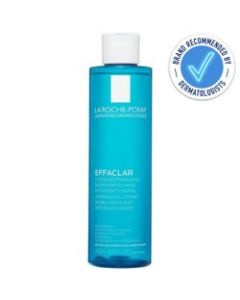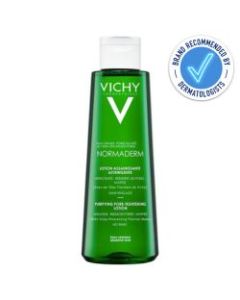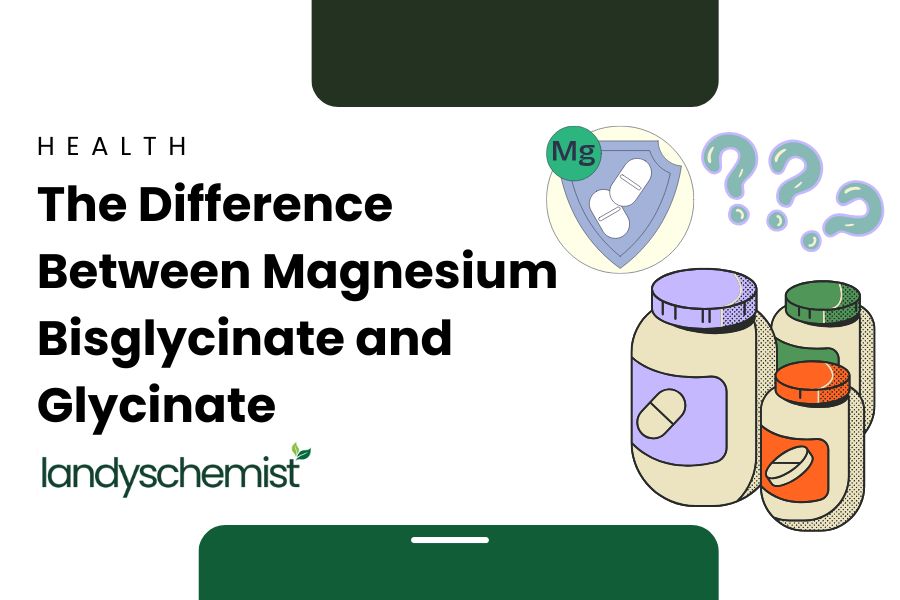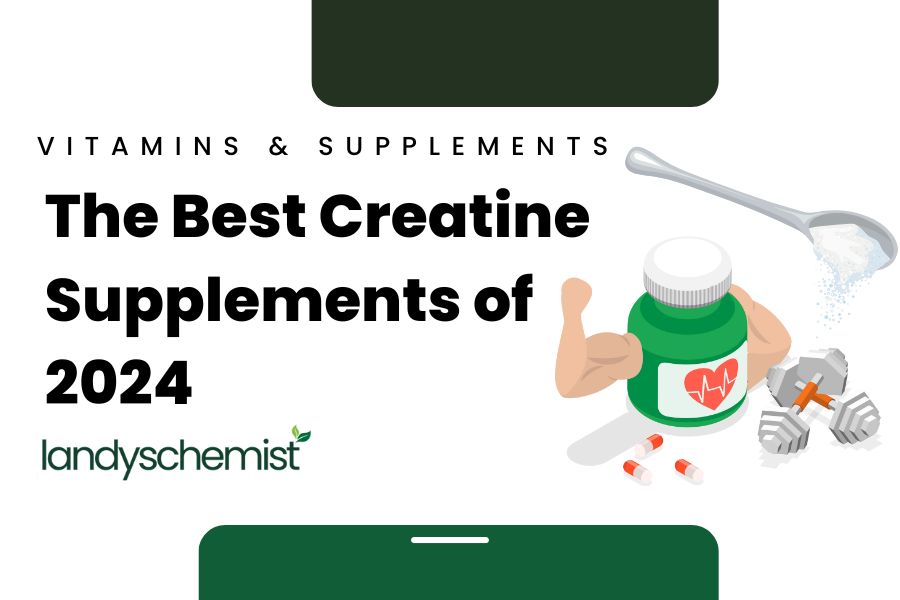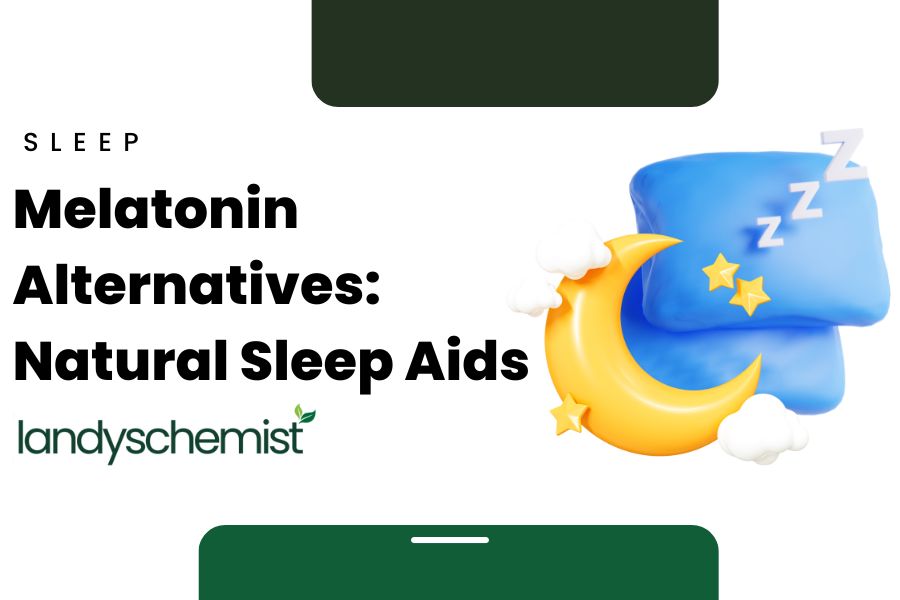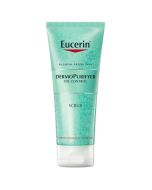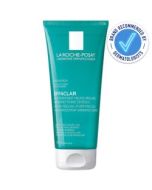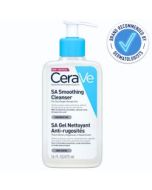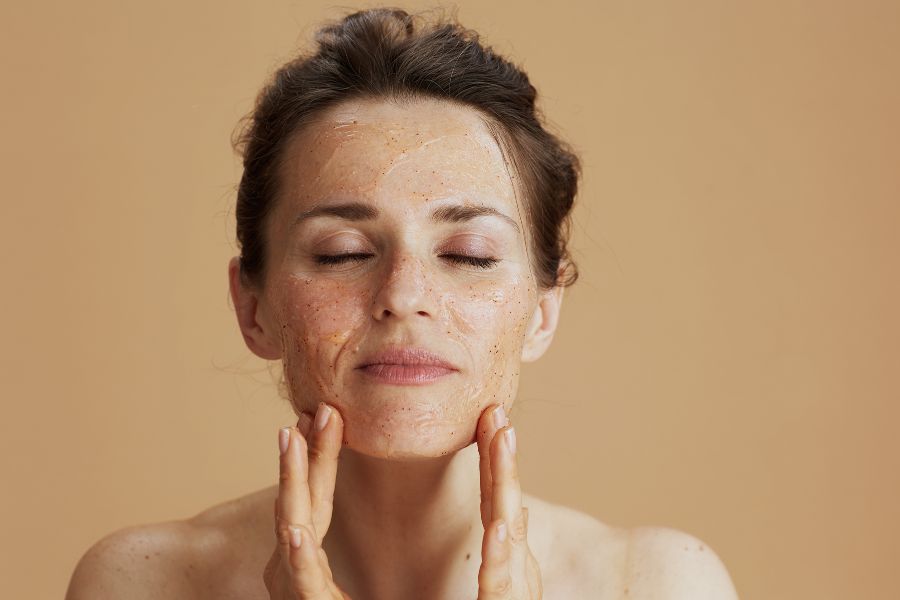
Should You Use A Chemical Or Physical Exfoliator?
Exfoliation is a vital step to achieving a radiant complexion, working to unclog pores, remove dead skin cells and reveal a glowing complexion. From powerful yet gentle exfoliating acids in chemical formulations to scrubs of physical exfoliants, we will help uncover their unique modes of action and how they cater to different skin types.
Let’s unpack what exfoliating means for your skin!
What does exfoliating mean?
Exfoliating is a process where dead skin cells are removed from the skin’s surface. This can be using a chemical exfoliant, granular scrub or exfoliating tool.
Eliminating the outermost layer of dead skin cells, known as the stratum corneum can help stimulate cell turnover, and reveal more youthful epidermal layers beneath. By removing accumulated dead skin cells, exfoliation leaves a smoother, more refined texture, effectively addressing concerns such as dullness, fine lines and even hyperpigmentation.
It is important to choose the appropriate exfoliator based on individual skin type and condition. For example, chemical exfoliators containing alpha-hydroxy acids (AHAs), or beta hydroxy acids (BHAs) are well-suited for deeper exfoliation. Physical exfoliants like scrubs offer a more superficial exfoliation. It is vital to exfoliate in moderation as excessive or harsh exfoliation can lead to skin irritation and a damaged skin barrier.
What are the benefits of exfoliating the skin?
Exfoliation removes dead skin cells
By sloughing off dead skin cells, exfoliation promotes a smoother skin texture.
Exfoliation unclogs pores
Exfoliants help to remove dirt, oil and debris from pores which can reduce the likelihood of acne.
Exfoliation stimulates collagen
Exfoliation can encourage skin cell regeneration as well as stimulate collagen synthesis.
Exfoliation aids absorption of skincare
Removing the layer of dead skin cells will allow products like moisturisers to penetrate deeper into the skin, promoting better hydration and nourishment for the skin.
Exfoliation brightens the complexion
Exfoliation can help lighten dark spots, hyperpigmentation, and post-inflammatory marks by removing layers of dead skin cells and refining the skin texture.
Exfoliation reduces fine lines and wrinkles
Through the stimulation of collagen, exfoliation can help improve skin elasticity.
What does chemical exfoliation mean?
Chemical exfoliation is a highly effective skincare method that utilises topical acids, such as Alpha Hydroxy Acids (AHAs) and Beta Hydroxy Acids (BHAs), to remove dead skin cells and encourage skin cell renewal. Unlike manual scrubbing found in physical exfoliants, chemical exfoliation operates at a deeper level by dissolving the bonds between skin cells.
One of the significant advantages of chemical exfoliation lies in the flexibility of acids which can be used, allowing it to address a wide range of skin concerns, including uneven skin tone and texture.
Furthermore, compared to physical exfoliants, chemical exfoliants tend to be gentler, making them suitable for various skin types and reducing the risk of inflammation and irritation caused by over-exfoliation. This can mean that it can take longer than physical exfoliants to show results. Chemical exfoliation is often preferred by those with sensitive or dry skin as it can be less abrasive, and irritating compared to physical exfoliants, but it is also suitable for individuals with acne-prone skin.
AHAs, such as glycolic acid and lactic acid, are water-soluble acids primarily focused on the skin's surface. This makes them ideal for addressing concerns like uneven skin texture and dullness.
On the other hand, BHAs, like salicylic acid, are oil-soluble acids that penetrate deeper into the skin, effectively unclogging pores and reducing skin inflammation.
Benefits of chemical exfoliation
- Improve skin tone
- Reduce dullness
- Brighten complexion
- Unclog Pores
- Gentle on the skin
- Work deeper within the skin to dissolve and loosen the cells
What does physical exfoliation mean?
Physical exfoliation involves using physical or mechanical means to physically remove dead skin cells and impurities off the outermost layer of dead skin cells, to reveal a smoother complexion. This method typically uses products like scrubs or brushes which use abrasives or textured surfaces.
Scrubs can contain ingredients such as microbeads and perlite as physical exfoliants to remove the top layer of dead skin. Physical exfoliation provides an immediate improvement in skin texture and appearance; however, it is essential to apply gentle pressure to avoid damaging the skin.
When done in moderation, physical exfoliation can effectively remove debris, excess oil and impurities making it beneficial for those with oily or combination skin as well as individuals who prefer the sensation of physically exfoliating the skin.
Benefits of physical exfoliation
- Scrub away the dead skin cells and debris physically providing a faster result
- Smoother skin texture
- Unclogged pores
- Improved circulation
- Brighten complexion
What is the difference between physical and chemical exfoliation?
Both chemical and physical exfoliation effectively remove dead skin cells, enhance cell turnover, and unclog pores, resulting in a brighter complexion and smoother skin surface. Each method offers unique benefits, making it advantageous to include both chemical and physical exfoliants in your skincare routine; however, it is essential to use them on separate days and follow recommended usage frequencies to prevent skin dryness.
The distinction between chemical and physical exfoliants lies in their mechanisms: chemical exfoliants dissolve and loosen bonds between cells, while physical exfoliation involves manual scrubbing to remove dead skin cells and debris from the surface. Overuse of physical exfoliants can lead to microtears, causing skin irritation and redness, particularly for sensitive or dry skin types, making it crucial to be mindful of the ingredients used.
Chemical exfoliation enhances skin tone and brightens the complexion, whereas physical exfoliation targets skin texture, fine lines, and wrinkles by stimulating collagen production.
While chemical exfoliants deliver impressive results, it's essential to note that some acids, such as AHAs, can increase sun sensitivity, necessitating daily SPF application to shield your skin. Additionally, chemical exfoliants may take longer to show results but prove effective for concerns like hyperpigmentation.
Exfoliation Recommendations
Chemically Exfoliate With:
This is specifically formulated for sensitive skin which is oily and prone to blemishes. It combines a purifying agent and micro-exfoliant LHA with Thermal spring water to reduce and unclog pores.
This is a hypoallergenic lotion which is formulated with exfoliating salicylic acid, glycolic acid, and vitamin C to purify and tighten the appearance of pores and brighten the complexion of your skin.
Physically Exfoliate With:
This scrub contains perlite to gently purify and smooth all types of sensitive skin. It is also enriched with La Roche-Posay Thermal Spring Water to soothe and hydrate the skin to prevent drying out the skin or irritation.
Summary:
- Chemical exfoliation involves the use of active ingredients, such as alpha hydroxy acids (AHAs) or beta hydroxy acids (BHAs), to dissolve the bonds between dead skin cells, encouraging gentle and effective removal of the skin's outermost layer.
- Physical exfoliation involves manually using scrubbing agents or tools to remove dead skin cells and impurities from the skin's surface.
- Exfoliation benefits the skin by promoting cell turnover, removing dead skin cells, and revealing a smoother and brighter complexion.
FAQs about Physical and Chemical Exfoliation
Do I need both physical and chemical exfoliants?
Incorporating both types of exfoliants in your skincare routine can effectively enhance cell turnover, eliminate dead skin cells, and improve uneven skin texture. By combining physical exfoliants, which manually remove surface debris, with chemical exfoliants that dissolve bonds between skin cells, you can achieve a more comprehensive exfoliation experience. This balanced approach can lead to a smoother, brighter complexion and promote healthier-looking skin. As with any skincare practice, it's crucial to exfoliate in moderation and tailor the frequency and intensity based on your individual skin needs to avoid irritation or over-exfoliation.
Do not use both types of exfoliants on the same day and follow the recommendations on how they should be used to avoid over-exfoliation as this can cause skin dryness and irritation.
Is a chemical exfoliant necessary?
Although a chemical exfoliant is not a must-have for everyone, it can be a valuable addition to your skincare routine, offering benefits beyond what physical exfoliants can achieve alone. Chemical exfoliants, such as AHAs and BHAs, provide a more uniform exfoliation without the need for physical scrubbing, which minimises the risk of irritation. They also can penetrate the skin more deeply, effectively targeting clogged pores, fine lines, and sun-damaged areas.
However, chemical exfoliants may not be suitable for everyone. Some individuals may have allergies or sensitivities to certain chemical exfoliants, or they might simply prefer the sensation of physical exfoliation.
If you decide to incorporate a chemical exfoliant into your routine, it's essential to begin with a lower concentration and conduct a patch test to gauge your skin's response. Additionally, keep in mind that chemical exfoliants can increase your skin's sensitivity to the sun, so it's crucial to include SPF protection in your daily skincare routine.
Is it ok to exfoliate every day?
To strike a balance between reaping the benefits of increased cell turnover and removing dead skin cells without drying out your face, it is recommended to exfoliate approximately 2-3 times a week. This frequency allows your skin to experience the positive effects of exfoliation while minimising the risk of overdoing it and causing dryness. By following this guideline, you can maintain a healthy and radiant complexion, ensuring that your skin remains nourished and revitalized.
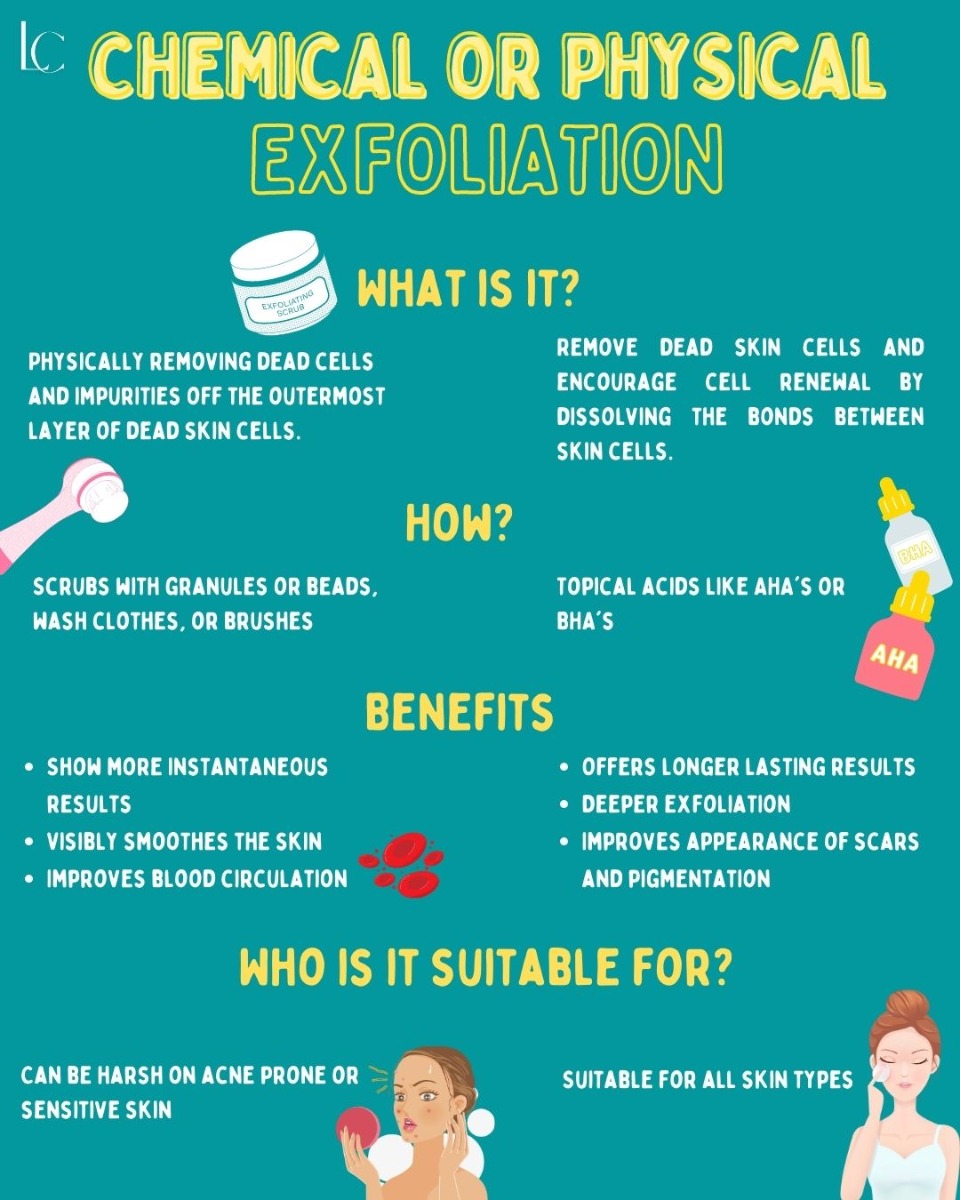
By Saarah Mengrani, MSc Biotechnology

